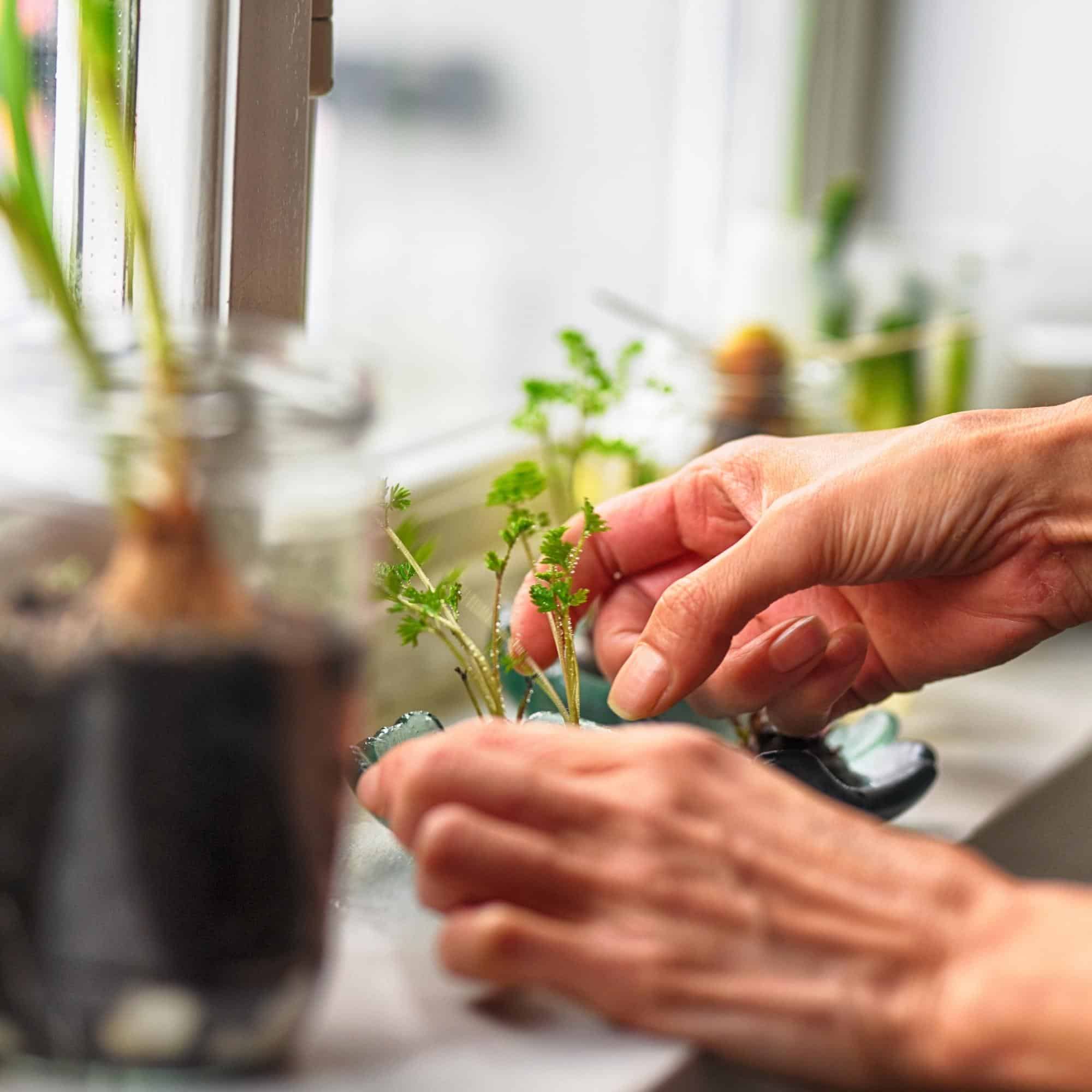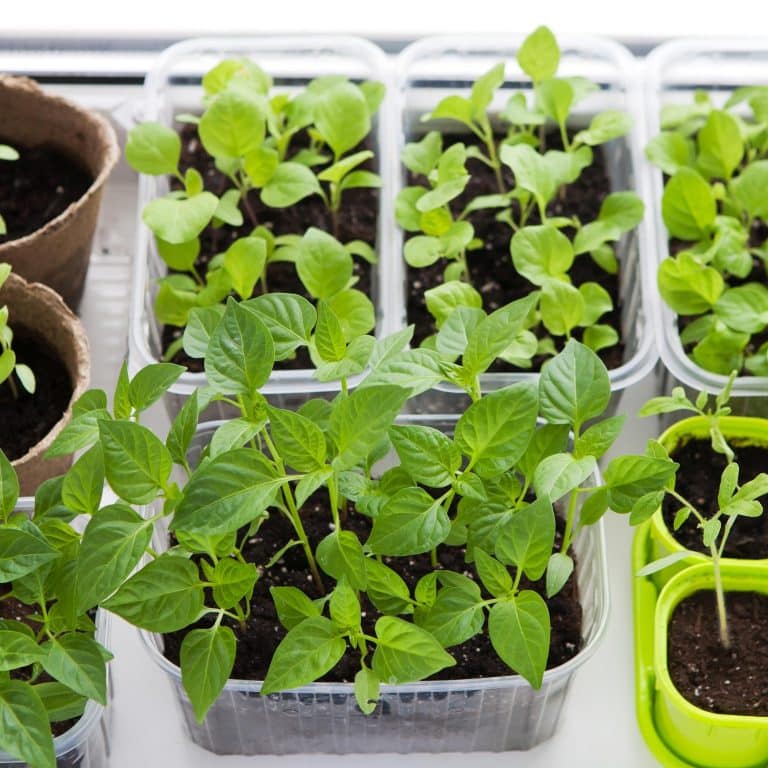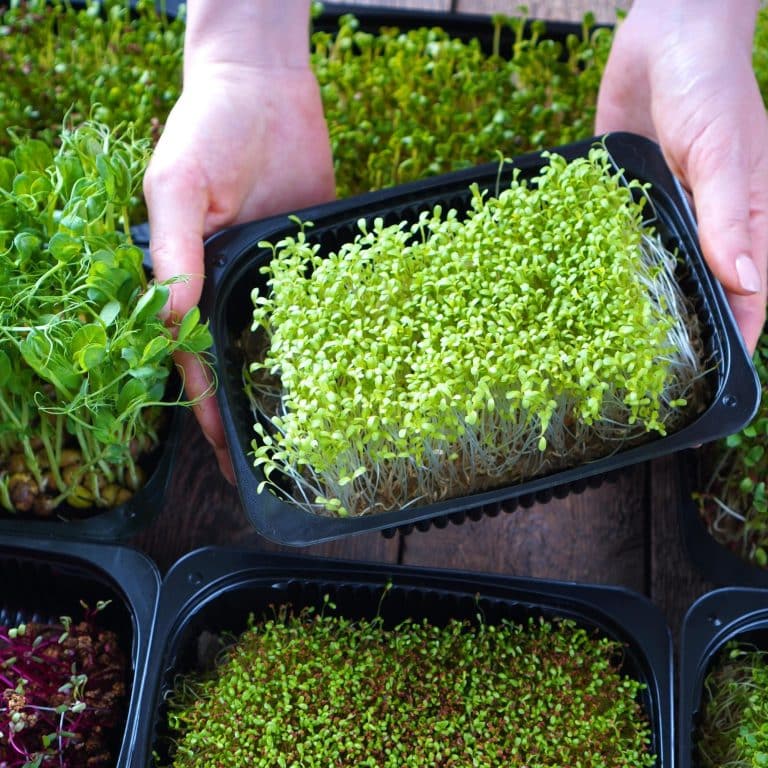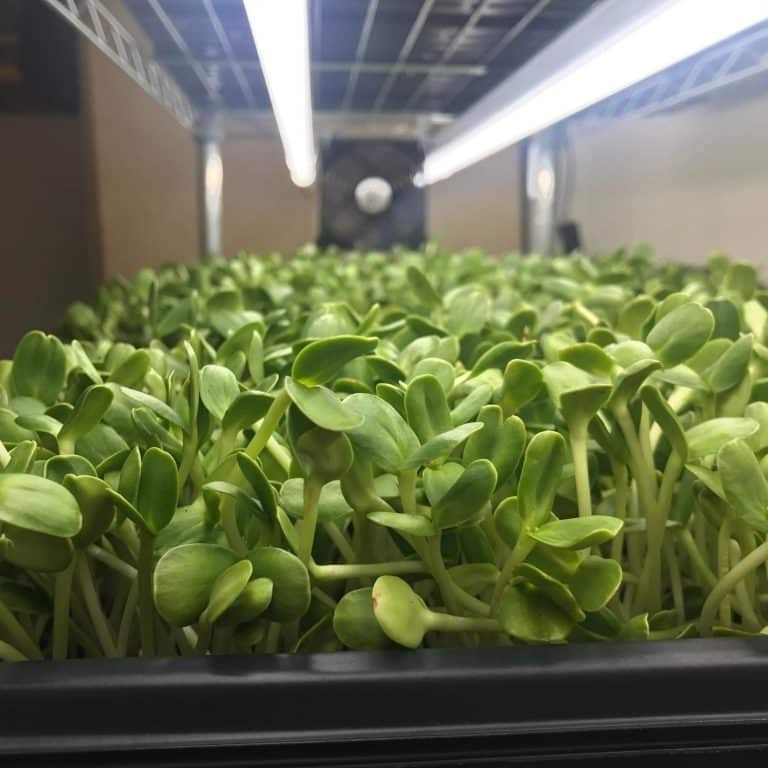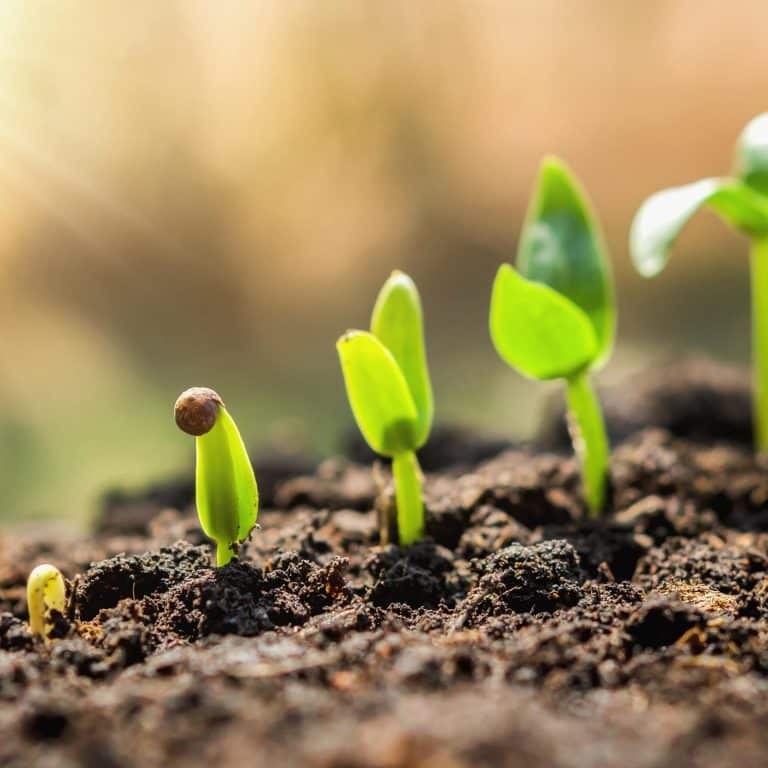8 Vegetables to Grow in Your Indoor Container Garden for Year-Round Salad Fun
Do you love salads but don’t want to eat the same ones all year long? If so, you’re in luck! If you’re looking for a fun and easy way to grow your own vegetables indoors, look no further than the salad bowl garden. This type of container garden is perfect for growing leafy greens like lettuce and spinach, but you can also grow a variety of vegetables in your indoor container garden that will give you different flavors and textures for your salads. In this blog post, we’ll go over eight different vegetables that you can grow in your indoor container garden for year-round salad fun!
Celery
Celery is a great vegetable to grow in your indoor container garden. It’s a bit harder to grow than some of the other vegetables on this list, but it’s worth it because celery is a delicious addition to salads and other dishes including homemade soup stock. Celery grows best in soil that is rich in organic matter, so make sure to mix some compost into your soil before planting celery seeds. Celery seeds will germinate best if they are planted shallowly, so only cover them with a light layer of soil. Celery plants need plenty of water, so make sure to water them regularly.

While there are a lot of varieties of celery, the best celery varieties to grow indoors are:
- Golden Self Blanching Celery
- Red Venture Celery
- Utah Celery
Garlic
Garlic is used in many dishes. Garlic, on its own, has a cult-like following, and you can bet I’m in it! Garlic can be grown indoors, although you won’t receive a bulb as you would if it were planted in an outside garden. Because they need cold winter dormancy to form the scape (flower) and head, like other bulbs (think onions and daffodils), you’ll have to plant them outside to get garlic bulbs.
Although we can’t harvest garlic bulbs from our salad bowl garden, we can still get garlic greens. Garlic greens are the green tops of a bulb that sprout. They are not spring garlic or immature garlic bulbs with their edible green stalks. These greens are still palatable and can be used as seasoning or decoration. You’ll find their taste is milder than fresh garlic cloves.
How do you grow garlic indoors?
Growing garlic indoors doesn’t require a lot of space, and it’s easy to grow. You can even grow garlic from cloves that you buy at the grocery store. Break the clove off of the bulb and plant it in soil with the pointed end facing up. Plant a few cloves in a pot with potting soil if you want garlic greens. Make sure to place the pot in a sunny spot and only water it lightly. The greens will be ready to snip off in seven to 10 days. Keep planting new cloves every few weeks so that you always have fresh garlic greens on hand.
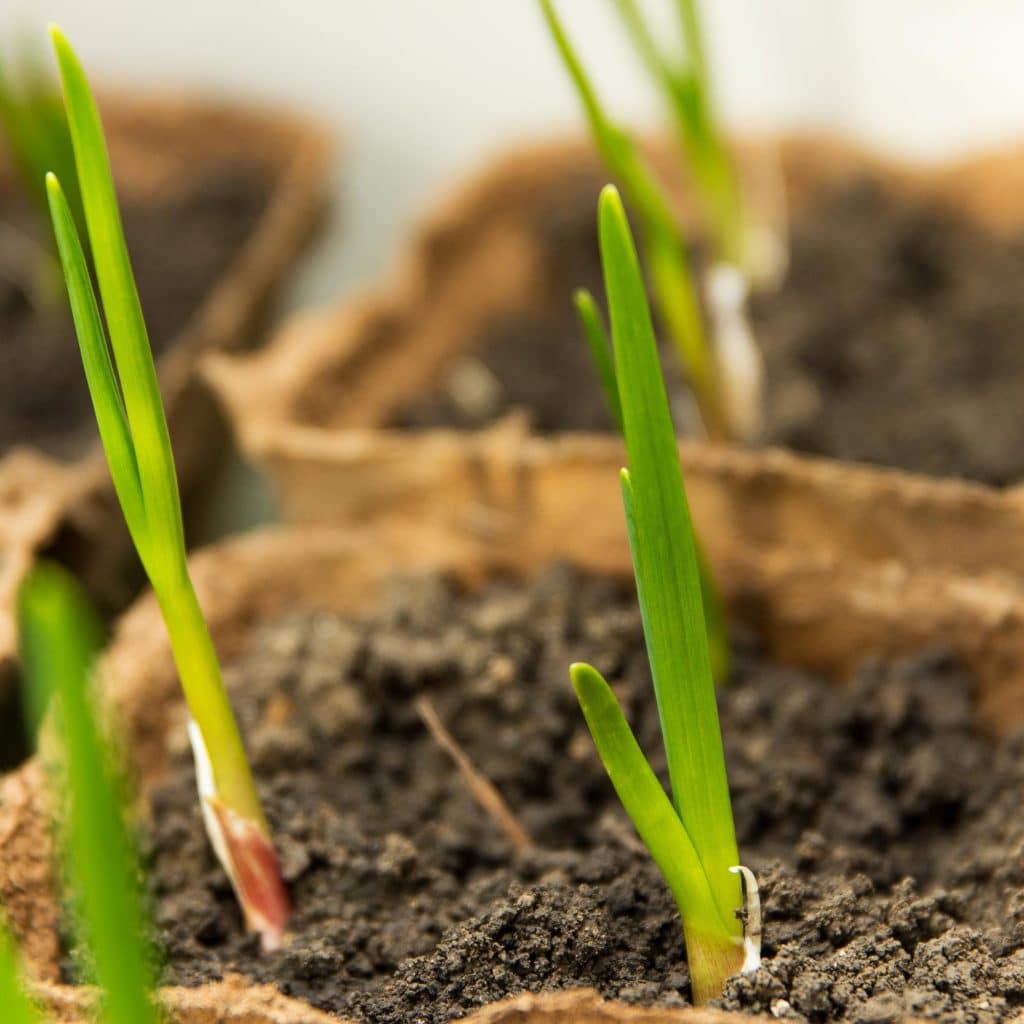
Herbs
Herbs are the perfect way to take any dish up to the next level of flavor. There are many varieties of herbs and what you want to plant in your salad bowl garden will depend on your taste. The wonderful thing about herbs is how versatile they are. Herbs can be used fresh or hung to dry. They can be used in cooking, cleaning, and even in medicinal ways.
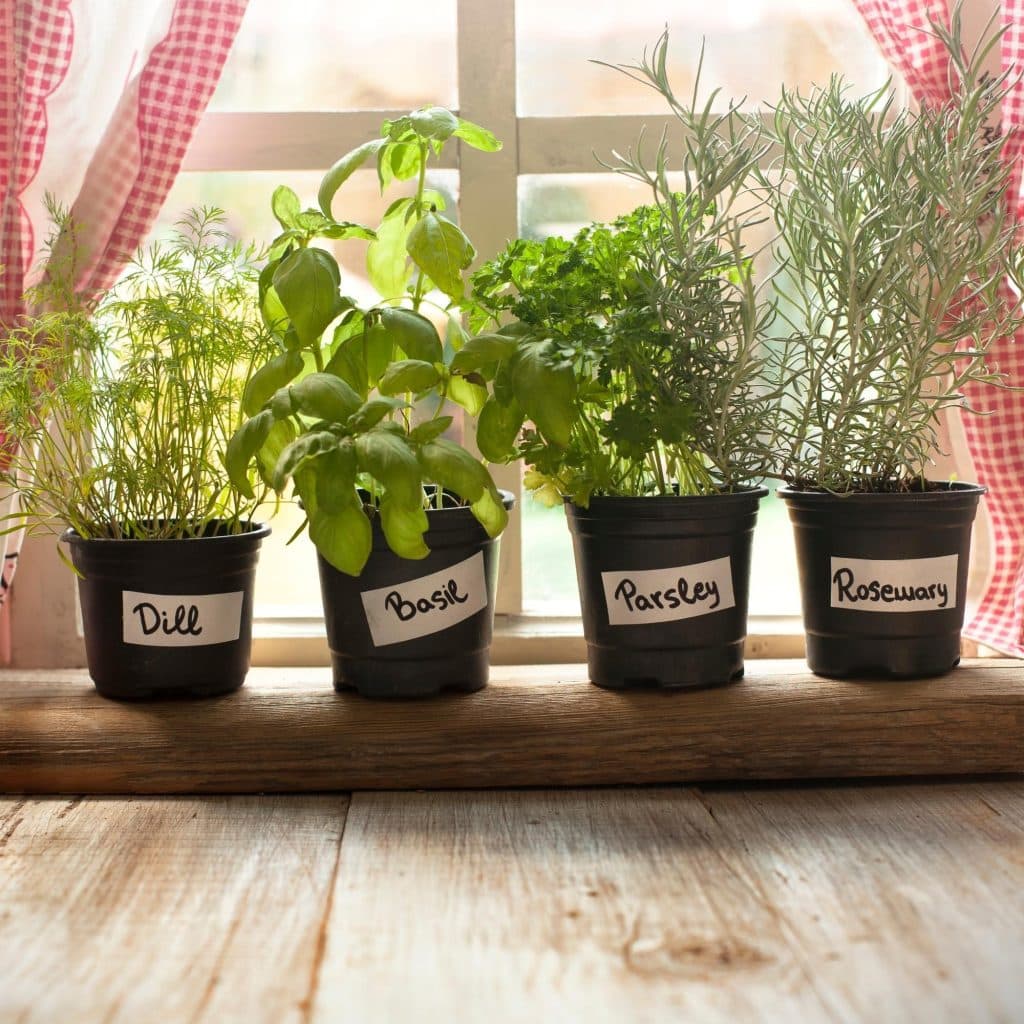
Some very common herbs for your indoor garden are:
- Basil
- Chives
- Cilantro
- Dill
- Mint
- Oregano
- Parsley
- Rosemary
- Thyme
If you’re on the fence about growing an indoor container garden, I’d suggest getting started with herbs first. Not only are they versatile but they also are typically very beginner gardener friendly. Give growing herbs a try with a simple Herb Kit.
Microgreens
Microgreens technically have their own category here because they are grown differently than the other plants, however, microgreens are essentially the same seeds as the others on this list. Microgreens are typically in the brassica family (broccoli, kale, cabbage, etc) however they can be many different greens.
One VERY important thing to note is that you CANNOT use nightshades for microgreens. This includes tomatoes, potatoes, eggplants, and peppers. Nightshade greens are not edible. They can be poisonous. The fruit produced from nightshades are fine to eat, of course, and they are delicious, but they are not to be used to grow microgreens.
What are Microgreens?
Now that that important disclaimer is out of the way, let’s discuss what microgreens are. Microgreens are nutrient-rich shoots of edible vegetables and herbs. They can contain up to 40 times more nutrients than full-grown vegetables, making them a great addition to any diet. Microgreens can be used in smoothies, salads, garnishes, and sandwiches. The possibilities are endless with microgreens!
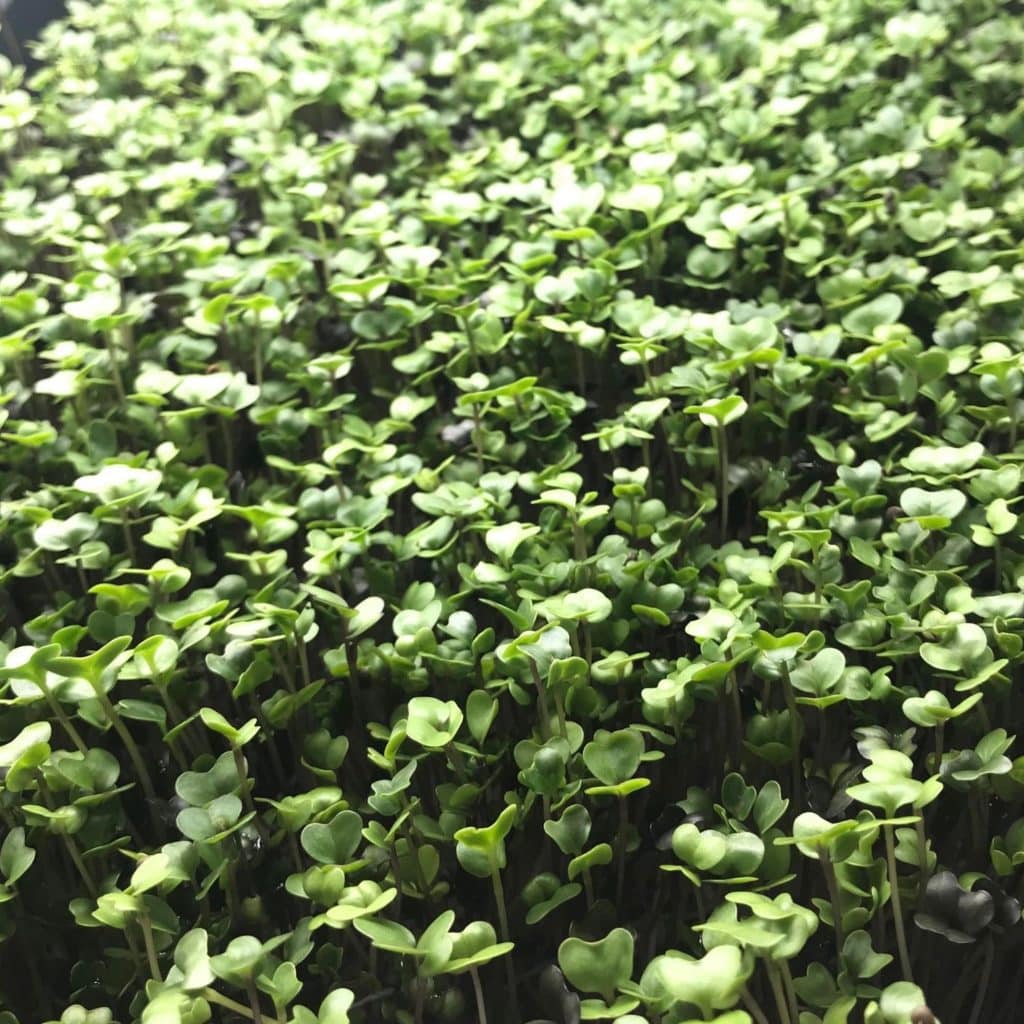
If you’re interested in learning more about microgreens make sure to read Microgreens: The New Superfood Taking Over Your Kitchen
How do you grow Microgreens indoors?
Growing microgreens indoors is a very easy task. They are quick to grow (being harvested anywhere from 7 to 30 days after planting). You can also easily grow them on a well-lit window sill or kitchen counter. I suggest a microgreens starter kit. Greener Harvest Seeds has 8 microgreens to choose from for your starter kit. They also supply downloadable growing directions with every kit. And even better, they now offer a seed subscription so you can get seeds and soil for your reusable starter kit trays sent to you monthly or even every 2 weeks!
Onion
Just like garlic, when growing onions in your indoor container garden, you won’t be harvesting a full onion bulb. Instead, you’ll be growing the greens. This works out great in salads or as a garnish.
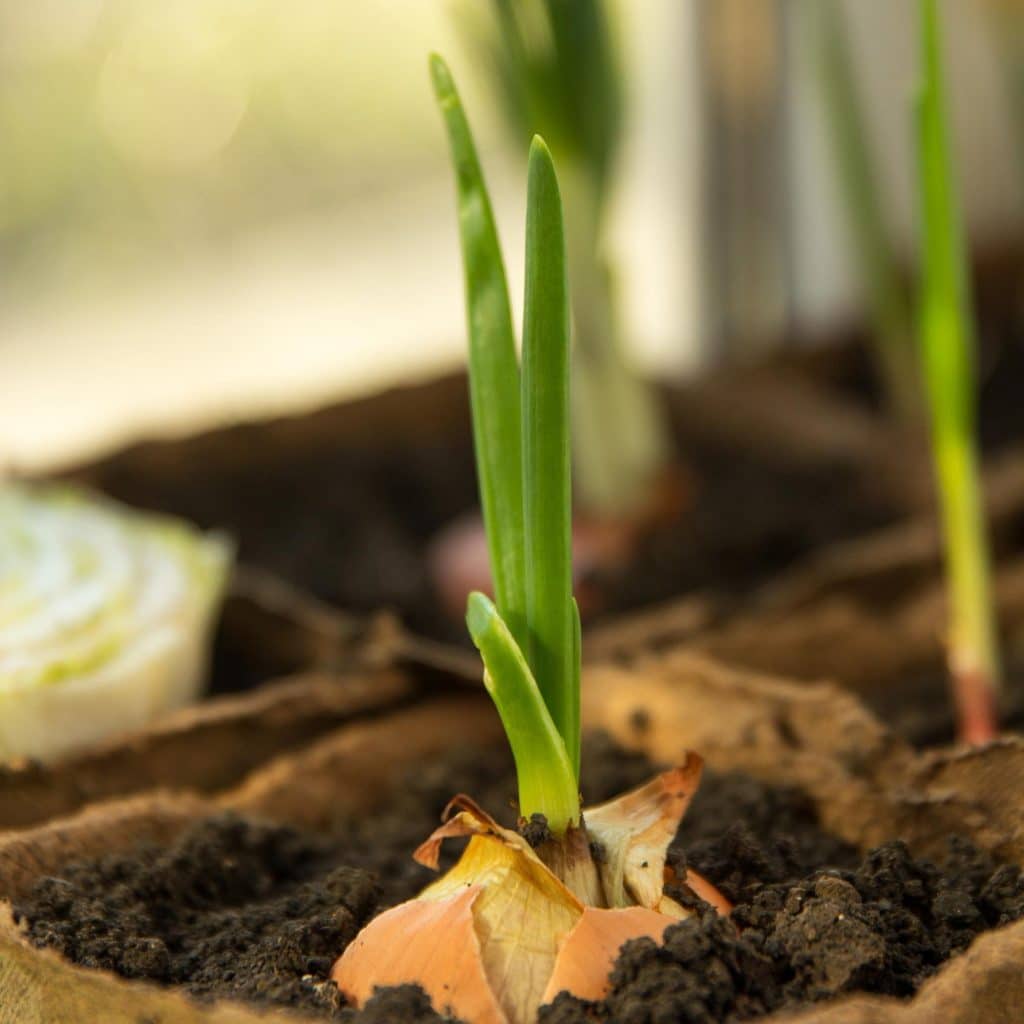
You can either use an onion bulb or seeds to start. If you come across onion sprouts in your pantry, don’t throw them away! You can use them to start an indoor garden. Cut off any remaining onion flesh and plant the sprout in a pot or container. Don’t forget to water it too.
What do Onions need to be successfully grown indoors?
Onions need to have a deeper container, 6 to 10 inches deep is ideal. Onions planted in shallower than six-inch containers can still grow, though the depth will affect both quality and size. Deeper pots enable more root growth and provide bulbs with adequate space to expand. Unless you’re growing gigantic onions indoors, there’s no need for a container deeper than ten inches.
Light is very important for onions. They grow best in full sun but will still do alright with six hours of sunlight. 12 hours of sunlight is ideal. If you don’t have a spot that gets full sun, you can supplement with grow lights.
As far as watering goes, onions need to be kept moist but not waterlogged. Aim for about an inch of water per week. If the soil feels dry to the touch, give your onion plants a good drink.
Peppers
There are so many different types of peppers: large, mild, small, spicy, and sweet. The best types of peppers to be grown indoors are small varieties. The first step to growing peppers in your salad bowl garden is to figure out which one(s) you want to grow. If you’re not sure, this article has a list of 14 different small varieties that grow wonderfully in containers.
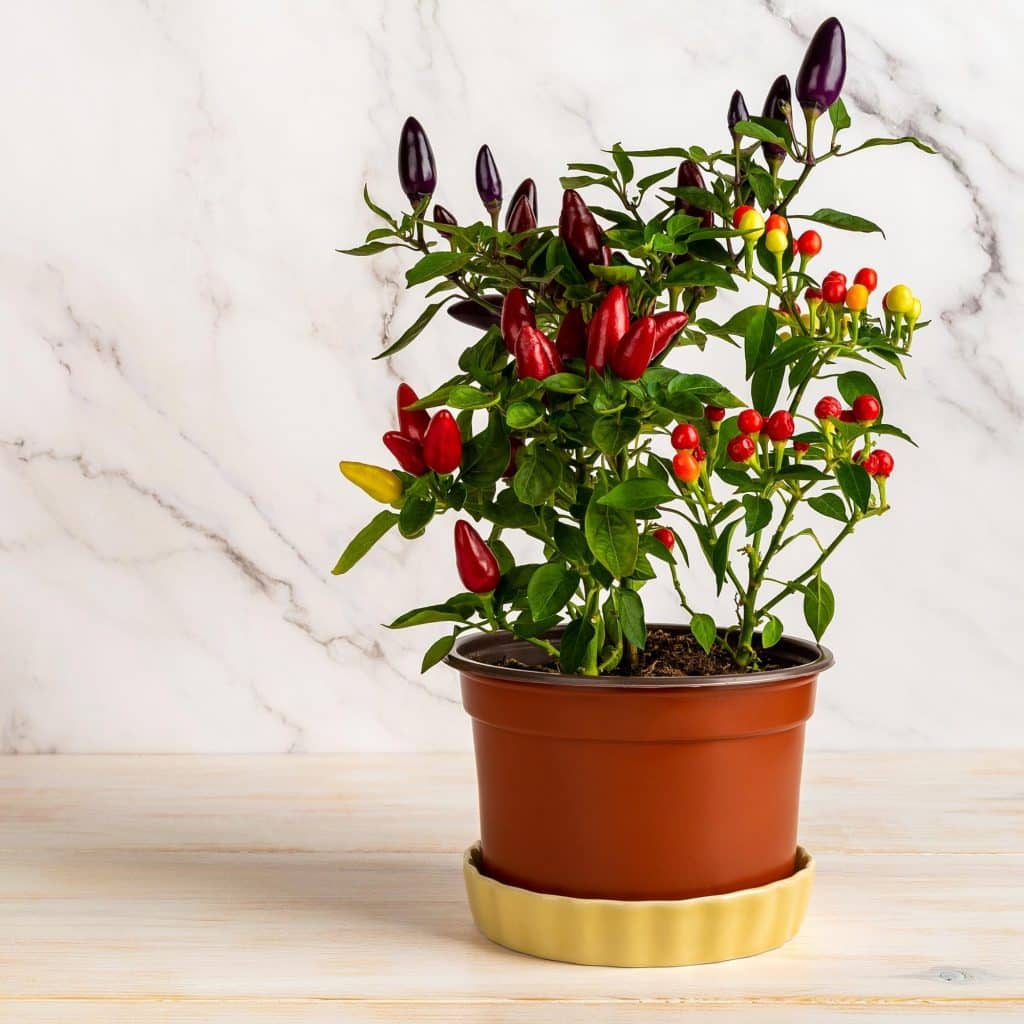
What do Peppers need to be successfully grown indoors
When growing peppers in an indoor container garden, it’s important to keep a few things in mind. Peppers love the sun, so make sure to place them in a spot that gets plenty of light. They also need consistently moist soil, so water them regularly.
Peppers grow best when the temperature is between 75 and 85 degrees Fahrenheit. If you live in a colder climate, then you may have trouble growing peppers. Luckily we live in a time where people have resources to solve problems like this and you can purchase yourself a seed warmer mat if you find that you are having trouble growing your peppers due to temperatures.
Peppers are a fruiting plant so they need to have nutrient-rich soil and be fed fertilizer often. I recommend using an organic fertilizer that is high in nitrogen. You can find these at your local nursery or garden center.
Sprouts
Sprouts are very similar to microgreens. Sprouts are the stage of life before microgreens. They are very high in nutrients and are super easy to grow. They don’t even need light to grow and are typically ready to eat within 3 to 5 days.
What can you sprout?

The most common sprouts are alfalfa, broccoli, and mung bean. But you can sprout a variety of seeds. Just like microgreens you want to stay away from the nightshade family of course. Also when purchasing seeds to sprout make sure that they are approved for sprouting. You can learn more about sprouting seeds here.
How to get started sprouting
Just like with the microgreens, I suggest a sprouting kit to get started especially if you’ve never sprouted before. Sprouting is super easy. They soak in water and are rinsed with fresh clean water twice a day. There are a couple of common sprouting methods:
The Jar Method
With this sprouting method, you are sprouting your seeds in a glass jar, like a mason jar. Instead of a regular canning lid, you will be using a mesh lid. This can either be metal or plastic. The reason for a mesh lid is so that you can rinse and drain the water out without losing any seeds.
The Tray Method
This sprouting method is using trays, often stackable. There are typically 2 types of trays: a mesh bottom and a solid bottom. The mesh bottom trays have the same purpose as the mesh jar lid mentioned above. The solid bottom trays are made to hold the mesh bottom trays to that the sprouting seeds can be soaked in water throughout the day.
Tomatoes
That’s right, you can certainly grow tomatoes in your indoor container garden! You want to make sure that you select the right variety, as not all types of tomatoes do well indoors.
What Types of Tomatoes can be grown indoors?
You want to get a smaller variety of tomatoes when planning your salad bowl garden. Think cherry or plum tomatoes. A variety that was “dwarf” or “mini” in the name is a good option.

What do Tomatoes need to be successfully grown indoors?
Tomatoes are the larger plant on this list, because of this I’d recommend that it gets their own container. You want to make sure that your tomato plant can get plenty of sunlight, or time under a grow light. And because tomatoes produce fruit, you want to make sure that you keep up with feeding the soil and roots lots of nutrients just like with the pepper plants. Tomatoes really enjoy nitrogen and potassium.
Adding vegetables like peppers, tomatoes and sprouts to your indoor container garden will give you a year-round salad bowl garden. These plants all require different amounts of sunlight, water and fertilizer, so be sure to read up on their individual needs before planting them. With a little bit of research and some TLC, you’ll be enjoying salads straight from your own garden all year long!

